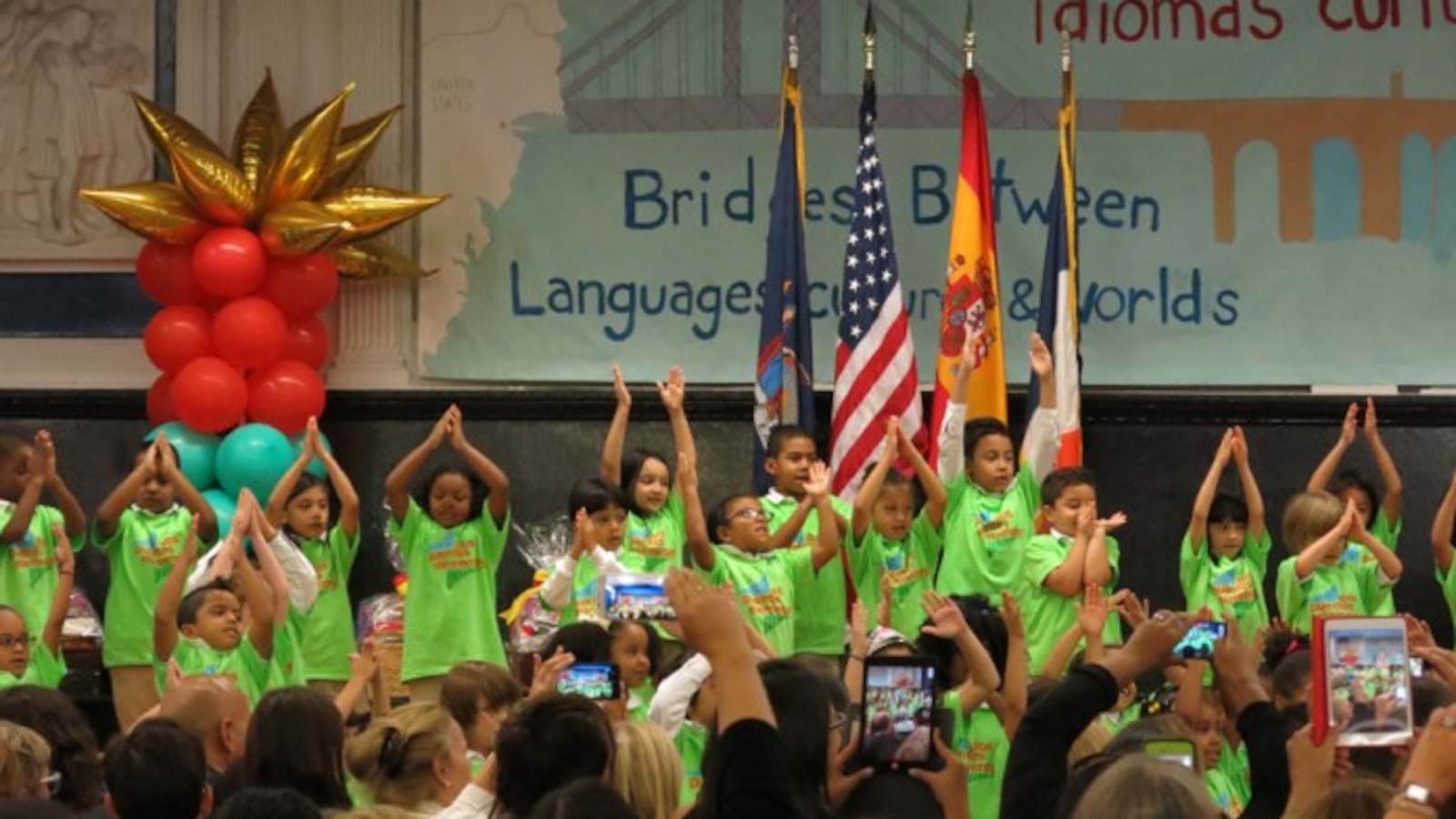The city has selected 15 schools with outstanding dual-language programs to serve as models for the growing number of schools interested in helping students become fluent in more than one language.
Chancellor Carmen Fariña, the bilingual daughter of Spanish immigrants, has pushed to expand the number of dual-language programs across the city, arguing that bilingualism is an increasingly crucial skill in the global economy. She has also encouraged schools to use the programs to attract a more diverse mix of students.
The programs, where math, science, history, and other subjects are taught in both English and another language, are popular with a wide range of families, including native-English-speaking parents who want their children to learn a second language.
The new model programs are spread across all five boroughs and teach Chinese, French, Russian, Hebrew, or Spanish alongside English. Each will host visitors from other schools that are developing dual-language programs, and will receive staff training and $10,000 in teaching materials to strengthen their own programs.
“These 15 schools are leaders in dual-language education,” Fariña said in a statement. “Through collaborative practices, we can ensure a supportive, high-quality multilingual experience for even more students.”
Unlike traditional bilingual classes that focus on immigrant children who are trying to learn English, dual-language programs enroll a mix of native and non-native English speakers with the aim of helping both groups become proficient in two languages. Recent studies have shown that these programs improve test scores for both groups of students and can help narrow the difference in standardized test scores between English learners and native speakers.
That is an urgent matter for New York City, where just over 4 percent of English learners passed this year’s state English exams, compared to over 30 percent of students citywide. Since 2011, the city has been subject to a state-mandated “corrective action plan” to improve instruction for English learners, who account for one in seven city students.
Earlier this year, Fariña announced that the city would create new dual-language programs at 25 schools and expand the programs at 15 others. Still, traditional bilingual programs remain the norm, with about 480 across the city.
In addition to their instructional value, Fariña has often touted dual-language programs for their ability to attract a mix of families to schools that offer them. As the city faces mounting pressure to address school segregation, Fariña has highlighted dual-language programs as a way to increase diversity at individual schools.
The model schools and the languages they offer are:
Bronx PS/IS 218 Rafael Hernandez Dual Language Magnet School – Spanish PS 73 – Spanish MS 223 the Laboratory School of Finance and Technology – Spanish High School of World Cultures – Spanish Brooklyn PS 200 Benson School – Russian PS 133 William A. Butler – Spanish and French IS 228 David A. Boody – Russian, Chinese, Hebrew and Spanish Manhattan PS 161 Pedro Albizu Campos – Spanish MS 319 Maria Teresa – Spanish Manhattan Bridges High School – Spanish High School for Dual Language and Asian Studies – Chinese Queens PS 16 The Nancy DeBenedittis School – Spanish PS 166 Henry Gradstein – Spanish IS 145 Joseph Pulitzer – Spanish Staten Island PS 19 The Curtis School – Spanish

